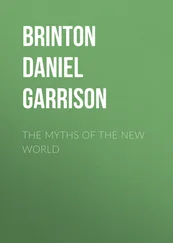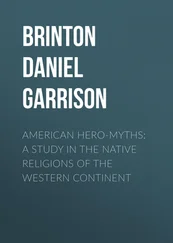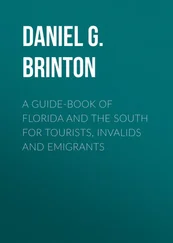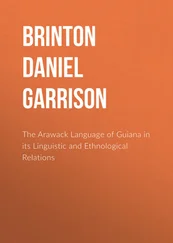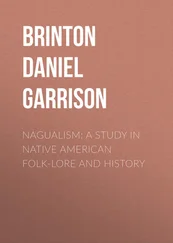Daniel Brinton - The Lenâpé and their Legends
Здесь есть возможность читать онлайн «Daniel Brinton - The Lenâpé and their Legends» — ознакомительный отрывок электронной книги совершенно бесплатно, а после прочтения отрывка купить полную версию. В некоторых случаях можно слушать аудио, скачать через торрент в формате fb2 и присутствует краткое содержание. Жанр: foreign_antique, foreign_prose, на английском языке. Описание произведения, (предисловие) а так же отзывы посетителей доступны на портале библиотеки ЛибКат.
- Название:The Lenâpé and their Legends
- Автор:
- Жанр:
- Год:неизвестен
- ISBN:нет данных
- Рейтинг книги:4 / 5. Голосов: 1
-
Избранное:Добавить в избранное
- Отзывы:
-
Ваша оценка:
- 80
- 1
- 2
- 3
- 4
- 5
The Lenâpé and their Legends: краткое содержание, описание и аннотация
Предлагаем к чтению аннотацию, описание, краткое содержание или предисловие (зависит от того, что написал сам автор книги «The Lenâpé and their Legends»). Если вы не нашли необходимую информацию о книге — напишите в комментариях, мы постараемся отыскать её.
The Lenâpé and their Legends — читать онлайн ознакомительный отрывок
Ниже представлен текст книги, разбитый по страницам. Система сохранения места последней прочитанной страницы, позволяет с удобством читать онлайн бесплатно книгу «The Lenâpé and their Legends», без необходимости каждый раз заново искать на чём Вы остановились. Поставьте закладку, и сможете в любой момент перейти на страницу, на которой закончили чтение.
Интервал:
Закладка:
An important class among the Lenape were those called by the whites doctors, conjurers, or medicine men, who were really the native priests. They appear to have been of two schools, the one devoting themselves mainly to divination, the other to healing.
According to Brainerd, the title of the former among the Delawares, as among the New England Indians, was powwow , a word meaning "a dreamer;" Chip., bawadjagan , a dream; nind apawe , I dream; Cree, pawa-miwin , a dream. They were the interpreters of the dreams of others, and themselves claimed the power of dreaming truthfully of the future and the absent. [145] Footnote_145_145 "As for the Powaws," says the native Mohegan, the Rev. Sampson Occum, in his account of the Montauk Indians of Long Island, "they say they get their art from dreams." Mass. Hist. Soc. Colls ., Vol. X, p. 109. Dr. Trumbull's suggested affinity of powaw with Cree tàp-wayoo , he speaks the truth; Nar, taupowauog , wise speakers, is, I think, correct, but the latter are secondary senses. They were wise, and gave true counsel, who could correctly interpret dreams. Compare the Iroquois katetsens , to dream; katetsiens , to practice medicine, Indian fashion. Cuoq, Lexique de la Langue Iroquoise .
In their visions their guardian spirit visited them; they became, in their own words, "all light," and they "could see through men, and knew the thoughts of their hearts." [146] Footnote_146_146 David Brainerd, Life and Journal , pp. 400, 401.
At such times they were also instructed at what spot the hunters could successfully seek game.
The other school of the priestly class was called, as we are informed by Mr. Heckewelder, medeu . [147] Footnote_147_147 Hist. Ind. Nations , p. 280.
This is the same term which we find in Chipeway as mide ( medaween , Schoolcraft), and in Cree as mitew , meaning a conjurer, a member of the Great Medicine Lodge. [148] Footnote_148_148 Hist. and Statistics of the Indian Tribes , Vol. I, p. 358, seq.
I suspect the word is from m'iteh , heart (Chip. k'ide , thy heart), as this organ was considered the source and centre of life and the emotions, and is constantly spoken of in a figurative sense in Indian conversation and oratory.
Among the natives around New York Bay there was a body of conjurers who professed great austerity of life. They had no fixed homes, pretended to absolute continence, and both exorcised sickness and officiated at the funeral rites. Their name, as reported by the Dutch, was kitzinacka , which is evidently Great Snake ( gitschi , achkook ). The interesting fact is added, that at certain periodical festivals a sacrifice was prepared, which it was believed was carried off by a huge serpent. [149] Footnote_149_149 Wassenaer's Description of the New Netherlands (1631), in Doc. Hist of New York , Vol. III, pp 28, 40. Other signs of serpent worship were common among the Lenape. Loskiel states that their cast-off skins were treasured as possessing wonderful curative powers ( Geschichte , p. 147), and Brainerd saw an Indian offering supplications to one ( Life and Journal , p. 395).
When the missionaries came among the Indians, the shrewd and able natives who had been accustomed to practice on the credulity of their fellows recognized that the new faith would destroy their power, and therefore they attacked it vigorously. Preachers arose among them, and claimed to have had communications from the Great Spirit about all the matters which the Christian teachers talked of. These native exhorters fabricated visions and revelations, and displayed symbolic drawings on deerskins, showing the journey of the soul after death, the path to heaven, the twelve emetics and purges which would clean a man of sin, etc.
Such were the famed prophets Papunhank and Wangomen, who set up as rivals in opposition to David Zeisberger; and such those who so constantly frustrated the efforts of the pious Brainerd. Often do both of these self-sacrificing apostles to the Indians complain of the evil influence which such false teachers exerted among the Delawares. [150] Footnote_150_150 See Brainerd, Life and Journal , pp. 310, 312, 364, 398, 425, etc., and
The existence of this class of impostors is significant for the appreciation of such a document as the Walam Olum. They were partially acquainted with the Bible history of creation; some had learned to read and write in the mission schools; they were eager to imitate the wisdom of the whites, while at the same time they were intent on claiming authentic antiquity and originality for all their sayings.
The principal sacred ceremony was the dance and accompanying song. This was called kanti kanti , from a verbal found in most Algonkin dialects with the primary meaning to sing (Abnaki, skan , je danse et chante en même temps, Rasles; Cree, nikam ; Chip., nigam , I sing). From this noisy rite, which seems to have formed a part of all the native celebrations, the settlers coined the word cantico , which has survived and become incorporated into the English tongue.
Zeisberger describes other festivals, some five in number. The most interesting is that called Machtoga , which he translates "to sweat." This was held in honor of "their Grandfather, the Fire." The number twelve appears in it frequently as regulating the actions and numbers of the performers. This had evident reference to the twelve months of the year, but his description is too vague to allow a satisfactory analysis of the rite.
CHAPTER IV
The Literature And Language Of The Lenape
§ 1. Literature of the Lenape Tongue – Campanius; Penn; Thomas,
Zeisberger; Heckeweider, Roth, Ettwein; Grube, Dencke;
Luckenbach; Henry; Vocabularies, a native letter.
§ 2. General Remarks on the Lenape.
§ 3. Dialects of the Lenape.
§ 4. Special Structure of the Lenape. – The Root and the Theme;
Prefixes; Suffixes; Derivatives, Grammatical Notes.
The first study of the Delaware language was undertaken by the Rev. Thomas Campanius (Holm), who was chaplain to the Swedish settlements, 1642-1649. He collected a vocabulary, wrote out a number of dialogues in Delaware and Swedish, and even completed a translation of the Lutheran catechism into the tongue. The last mentioned was published in Stockholm, in 1696, through the efforts of his grandson, under the title, Lutheri Catechismus, Ofwersatt pä American-Virginiske Spräket , 1 vol., sm. 8vo, pp. 160. On pages 133-154 it has a Vocabularium Barbaro-Virgineorum , and on pages 155-160, Vocabula Mahakuassica . The first is the Delaware as then current on the lower river, the second the dialect of the Susquehannocks or Minquas, who frequently visited the Swedish settlements.
Although he managed to render all the Catechism into something which looks like Delaware, Campanius' knowledge of the tongue was exceedingly superficial. Dr. Trumbull says of his work: "The translator had not learned even so much of the grammar as to distinguish the plural of a noun or verb from the singular, and knew nothing of the "transitions" by which the pronouns of the subject and object are blended with the verb." [151] Footnote_151_151 Transactions of the American Philological Association , 1872, p. 158.
At the close of his "History of New Sweden," Campanius adds further linguistic material, including an imaginary conversation in Lenape, and the oration of a sachem. It is of the same character as that found in the Catechism.
Читать дальшеИнтервал:
Закладка:
Похожие книги на «The Lenâpé and their Legends»
Представляем Вашему вниманию похожие книги на «The Lenâpé and their Legends» списком для выбора. Мы отобрали схожую по названию и смыслу литературу в надежде предоставить читателям больше вариантов отыскать новые, интересные, ещё непрочитанные произведения.
Обсуждение, отзывы о книге «The Lenâpé and their Legends» и просто собственные мнения читателей. Оставьте ваши комментарии, напишите, что Вы думаете о произведении, его смысле или главных героях. Укажите что конкретно понравилось, а что нет, и почему Вы так считаете.




